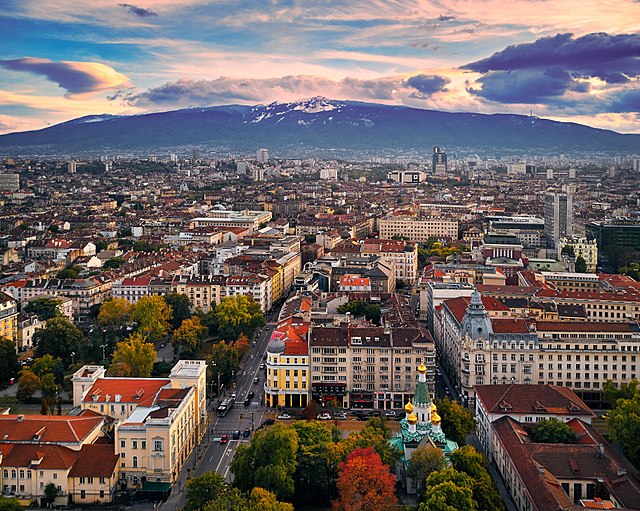The Museum of Socialist Art in Sofia is a museum of art which covers the history of the communist era in Bulgaria. It was established on 19 September 2011 amidst a controversy over the name, which was initially proposed as "Museum of Totalitarian Art". The museum's collection of large and small statues, busts, and paintings represents the period from 1944 to 1989, from the establishment of the People's Republic of Bulgaria to the fall of communism. The museum spread over an area of 7,500 square metres (81,000 sq ft) in the Sofia suburb known as "Red Star" is in three parts - a park with sculpture installations drawn from the communist period, an exhibition hall with paintings and easel representations, and a media or video hall in which films and newsreels related to the communist period are screened.
The museum with the statue park in 2012
"Five-pointed star" of the former Party House now at the entrance of the Museum of Socialist Art
Exhibits in the museum
Sofia is the capital and largest city of Bulgaria. It is situated in the Sofia Valley at the foot of the Vitosha mountain, in the western part of the country. The city is built west of the Iskar river and has many mineral springs, such as the Sofia Central Mineral Baths. It has a humid continental climate. Being in the centre of the Balkans, it is midway between the Black Sea and the Adriatic Sea and closest to the Aegean Sea.
Image: Russian church (37591925970)
Image: Alexander Nevsky Cathedral, Sofia (23401251189)
Image: Ivan Vazov National Theatre december
Image: Sofia '17 (24614482817)







